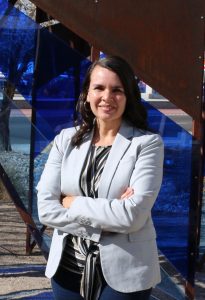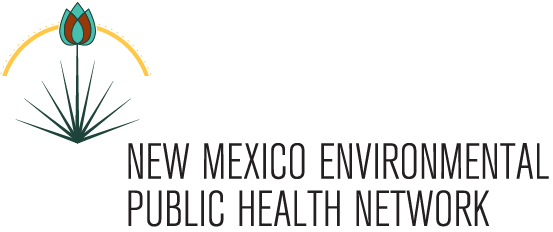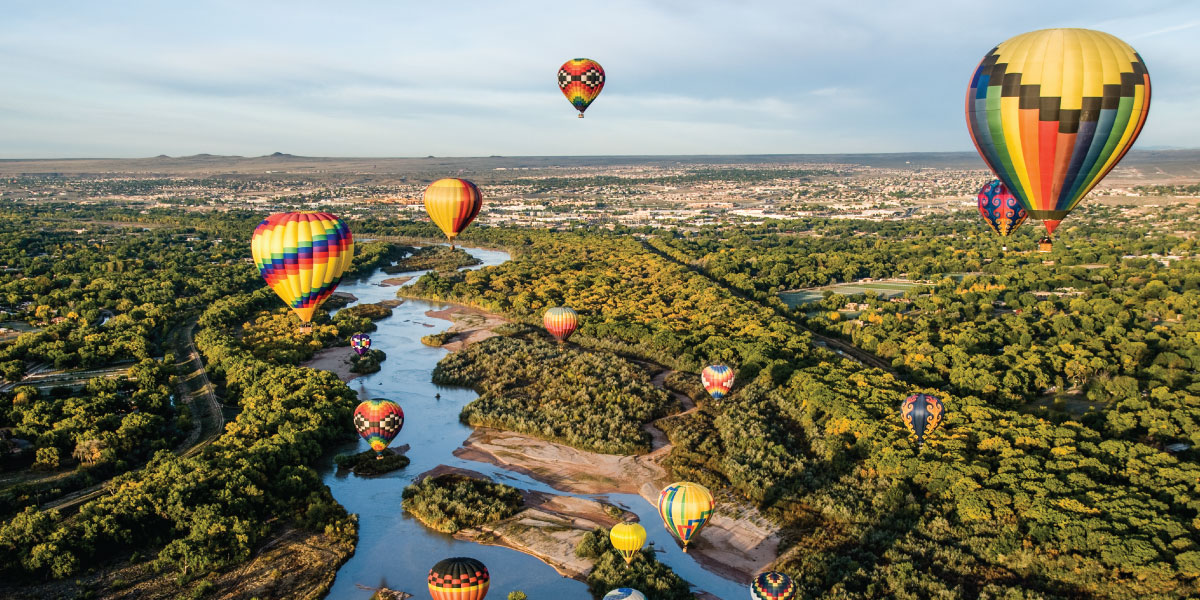Apr 7, 2021 –
Thanks to all of you who are continuing your hard work to improve public health during the COVID-19 pandemic as well as your work on important public health issues that arose during the 2021 legislative session.
We announced at the beginning of 2021 that the NM Environmental Public Health Network is now a program of New Mexico Voices for Children. If you missed the announcement, please see it here:
Environmental Public Health Group Becomes Program of Child Advocacy Organization
This quarter’s newsletter has information on the impact of environmental challenges on children’s health, why utilities are a public health issue, and guest articles from Teresa Seamster of the Sierra Club on air monitoring on the Navajo Nation and Virginia Necochoa of the New Mexico Environmental Law Center on racism as a public health issue.
NEWS
In previous newsletters, we have discussed the public health issues associated with the legacy of New Mexico’s uranium mining industry, especially impacting the Navajo Nation. The U.S. Environmental Protection Agency (EPA) recently announced three contract awards for cleanup efforts at more than 50 abandoned uranium mine sites in and around the Navajo Nation.
EPA Awards Contracts worth 220M to Cleanup Navajo Nation
Researchers continue to find links between racial inequities, environmental impacts, and COVID-19. See a recent report issued by The Alliance of Nurses for Healthy Environments– Nurses on the Frontlines: Unmasking the Influence of Air Pollution, Health Disparities, and Oil and Gas Development on COVID-19.
Nurses on the Frontlines: Unmasking
The New Mexico Office of Natural Resources Trustee recently settled two cases – the Fronk oil spill into the Cimarron River and part of the Gold King Mine blowout case. Those two cases bring a total of $1.2 million to New Mexico that will be spent on resource restoration. See announcements on the Fronk and Golf King Mine settlements below:
NM Natural Resources Trustee and Fronk Oil Co. Reach Settlement Over Cimarron River Spill
State Reaches 11M Settlement of Gold King Mine Disaster
The 2021 Legislative Session
More than 900 bills were introduced in the 2021 New Mexico legislative session. Just slightly more than 100 made it through both chambers and are awaiting the Governor’s signature. This includes several pieces of legislation related to environmental public health issues:
The Environmental Database Act (HB 51), which creates a centralized, map-based, searchable website to provide various geographic data, information on public health, wildlife status, and other interrelated environmental and energy industry data in order to enhance transparency and interagency cooperation.
Local Government Air Quality Regulations (SB 8), which compels the Environmental Improvement Board and local boards to adopt rules ensuring the maintenance of a maximum ozone concentration of 95 percent of the national ambient air quality standard for ozone, removing the required public notice and hearing for rule changes currently mandated. It removes restrictions on these rules being more stringent than those required by federal laws and repeals NM statute 74-2-5.2, which establishes NMED as the sole state air pollution control agency for purposes relating to federal air pollution legislation.
EIB Permit Denial for Poor Compliance (HB 76), which amends the Air Quality Control Act to allow permit revocation for construction relating to operations covered by the statute for any of the following five violations: material fact misrepresentation, information disclosure refusal, prior court convictions within ten years, operation without a permit, or previous revocation.
Please see NM Voices Legislative Priorities for a list of some of the other priority bills NM Voices for Children worked on during the 2021 session.
Research Shows that Children are Much More Susceptible to Environmental Public Health Problems
In December of 2019, Dr. Ruth Etzel, George Washington University professor and nationally known expert in children’s environmental health issues, spoke to NMEPHN members about the grave impacts of environmental pollutants on children’s health. Dr. Etzel reported that more than 1.7 million deaths of children worldwide each year can be directly attributed to environmental impacts, and at least one-quarter of these could be prevented with basic = environmental protections.
Why are children so vulnerable to environmental pollutants? According to the Centers for Disease Control, the fact that children are still growing puts them at greater risk if they are exposed to environmental contaminants. Contaminants are anything that can cause something to become unclean, polluted, or not pure, whether inside or outside, and can be found in schools, homes, drinking water, and other sources.
Children’s bodies are not adult bodies. They are especially vulnerable because:
- Children breathe more air, drink more water, and eat more food per pound of body weight than do adults.
- Children are more likely to put their hands in their mouth.
- A child’s body may not be able to break down and get rid of harmful contaminants that have entered their body.
- Health problems from an environmental exposure can take years to develop and emerge.
New Mexico’s children face additional challenges – such as high rates of poverty and other negative social determinants of health – that make them more vulnerable to the effects of environmental pollution. Nearly 30 percent of New Mexico children grow up in poverty, according to the Department of Health. Other challenges include the prevalence of single-parent households, lower education levels of parents, and low access to health care (32 of New Mexico’s 33 counties are designated as “health professional shortage areas”).
Read more at NM Health
NM Voices for Children released the Annie E. Casey Foundation’s 2020 New Mexico KIDS COUNT Data Book, which looks at several indicators of child well-being, in January of this year. Though child well-being had been improving overall, limited data on the COVID-19 pandemic shows that much of that improvement may have been lost.
See NM Voices for New Mexico specific information by county, race and ethnicity, and other key demographics
Also in decline since 2010 is infant health inequity, after decades of improvement, according to a recent study published in SSM-Population Health. This is mirrored by income inequality, which has also worsened in our country.
Read more Infant Mortality
What can we do to help protect New Mexico children from suffering the health effects of environmental pollution? Advocate for policies and processes at the local, state, and federal level. See the American Public Health Association’s recommendations
FEATURED ARTICLES
Navajo Chapters Installing Local PurpleAir Monitoring for Public Health
By Teresa Seamster, Tri-Chapter Air Monitoring Team
The remote Ojo Encino Chapter House, west of Cuba and in the greater Chaco Canyon area, is the first Navajo chapter to go on-line with continuous local air quality monitoring using the national PurpleAir network.
In early February, one outdoor PA11 monitor with an indoor sensor was installed to provide the community with 10-minute interval readings of particulate matter from burned hydrocarbons (PM 2.5) emitted from any source including vehicle exhaust, wood stoves, and nearby oil and gas wells. Brandon Velivis, Ojo Encino’s Economic Development consultant, climbed a ladder leaned up against the east wall of the chapter house to attach and activate the first monitor, while a small team comprised of members of the Tri-Chapter Health Committee, Northern Arizona University environmental professionals from ITEP, and a Fort Lewis College student intern watched remotely via Brandon’s cell phone placed on the ground. (Due to the ongoing prohibitions on the Navajo Nation regarding travel during the pandemic, a virtual meeting was the only option for the team to move ahead with the air-monitoring project.)
When the first connection with Wi-Fi was made and the first emission readings appeared on the screen, there was relief and rejoicing that the long-awaited monitor equipment was working properly and the internet in Ojo was strong enough to support the new connections. During the course of the next ten days, the monitor showed hazardous spikes with readings well over 100 micrograms per cubed meter readings indicating numerous unhealthy levels of particulate matter.
This project is the continuation of air monitoring conducted in nearby Counselor Chapter in 2018 as part of a health impact assessment by the community. At that time, the focus on measuring PM 2.5 pollution was intensifying with the publication of numerous health studies and findings that even moderate repeated exposure (under 100 mg/m3) leads to serious lung impairment, induced asthma, and other debilitating respiratory conditions.
The push for greater access to local air pollution data has grown rapidly with convenient and inexpensive technology available to measure microscopic particulate matter from combusted fuels. PurpleAir offers monitors for less than $400 that provide continuous readings that can be downloaded and archived for reference. The PurpleAir global map gives real-time readings from thousands of locations around the U.S. and the world.
In a U.C Berkeley Energy Institute blog by Meredith Fowlie, “My New Pollution Monitor: Gimmick or Game Changer,” the conclusion is: more is better. “If these little sensors are going to be transformative, they’ll need to be more widely deployed. And the data need to be actionable so that people can understand where the most dangerous pollution problems manifest and how we might address them.”
To better ensure the Ojo monitors are accurately reading emission levels, another pair will be placed at the nearby school as a co-location to validate the equipment is correctly calibrated and recording. Another pair will go to the Counselor Chapter House, to compare results with Ojo, as a far greater number of oil wells are operating there.
As for the data collection and analysis of impacts on the community – the hope is that these monitors can indeed be “game changers.”
Environmental Justice Requires Naming Environmental Racism
Dr. Virginia Necochea, Executive Director, New Mexico Environmental Law Center 
It is a great honor to write this piece in my capacity as the Executive Director of the New Mexico Environmental Law Center (NMELC). NMELC is a nonprofit, public interest law firm whose mission is to work with New Mexico’s communities to protect air, land, and water in the fight for environmental justice. For over 30 years, NMELC has provided free and low-cost legal services on environmental matters statewide and works with clients who seek to protect the environment and defend their communities from environmental injustices.
It has been more than a year since the pandemic took hold of our lives and almost a year since the brutal killing of George Floyd that set off profound racial reckoning that continues to date. The inequity uncovered by the pandemic and the ongoing brutal violence committed against Black, Indigenous, and people of color (BIPOC), has shaken the very foundation of our society. It has forced a confrontation with the undeniable reality that racism in our nation continues to hurt too many of our people. Although we are experiencing much grief, anger, and sadness during this time, we also recognize that it has opened opportunities to demand change.
It was on May 29, 2020, that the American Public Health Association (APHA) joined others in publicly declaring racism a public health problem. “Racism attacks people’s physical and mental health. And racism is an ongoing public health crisis that needs our attention now,” said APHA Executive Director Georges Benjamin. Since then, numerous other health groups, associations, and institutions, including the American Medical Association, have followed suit in making the same declaration. Although it has been powerful to witness so many steps forward to denounce the racist core and structure that our nation was built upon, we cannot stop there. It is vital that all of our organizations, institutions, and associations continue to center racism as the root of the problem and work to dismantle inequitable structures. Much of that work begins within our very own organizations. We can only create real transformation if we ourselves are willing to confront the ways we uphold and perpetuate injustices and inequities.
At NMELC, we recognize that our clients and the communities we serve continue to be disproportionately impacted by polluting industries, which are often placed near their homes, and consequently suffer major health problems as a result of pollution and lax and under-enforced regulations. This is not a coincidence. As an organization that names environmental justice as part of our mission, we must address and intentionally name environmental racism. As we continue to serve our clients and communities and work to integrate authentic diversity, equity, and inclusion practices across our organization, we will keep the following at the forefront: You cannot achieve environmental justice without naming and disrupting environmental racism.
We are motivated by the new administration’s focus on environmental justice issues, and those of us here in New Mexico are fully aware that there’s a great deal of work ahead of us. We must not allow public statements to remain nothing more than rhetoric. We must continue to hold ourselves and especially our decision-makers accountable to those who are most harmed by continued environmental injustices.
Access to Utilities is a Public Health Issue
When millions of people in Texas lost access to basic utilities – electricity, water, and natural gas – the energy and public health crisis was significant. Not only did it lead to the death of more than 40 people, but others faced life-threatening emergencies ranging from the lack of potable water to critical medical equipment being nonoperational. See a recent article in Climate Xchange on the Texas crisis.
As severe as this crisis was, it’s important to remember that access to utilities is a constant challenge for many families in New Mexico and throughout the United States. After facing difficult choices between paying for food, transportation, rent, medical care, and utilities, too many families suffer utility disconnections as a result.
There are also families in New Mexico that also don’t have any access to clean water, natural gas, and electricity. Homes in various regions in our state, ranging from areas on the Navajo Nation to regions along the New Mexico-Mexico border to the Pajarito Mesa just southwest of Albuquerque, often lack access to these basic services.
When families lose access, or don’t have access to utilities, the impacts to public health are severe. Cold temperatures can trigger asthma, intensify pain for children with certain conditions. Family members who depend on refrigerated medicine and/or electronic medical equipment are also at risk.
Extreme heat also presents significant health challenges as global temperatures rise and extreme heat events increase in frequency due to climate change. Prolonged exposure to extreme heat causes heat exhaustion, heat cramps, heat stroke, and even death, as well as exacerbates chronic conditions including respiratory and cardiovascular disease, according to the National Institute of Environmental Health Sciences.
US. Energy Information Administration data shows that one in three families face challenges paying utility bills. It is estimated that at least 70,000 New Mexico families are currently behind on electric bills and more than 27,000 on gas bills, many due to COVID-19 related health and economic challenges.
Health professionals can play a role in screening for risk in this area. The American Medical Association recommends that health professionals include ability to pay for utilities in their regular screenings. See: New Codes will Help Physicians Tackle Social Barriers. New Mexico law also prevents electric and gas utilities from being disconnected for low-income families during the heating season (Nov. 1 – March 15). Families should always contact their utility or cooperative to explain their situation, ask for access to assistance funds and payment plans and contact the NM Human Services Department to access Low Income Home Energy Assistance Program (LIHEAP) utility assistance funds.
***





